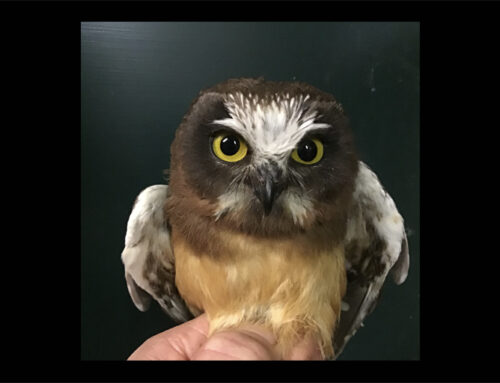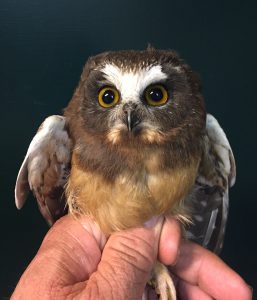
Juvenile Northern Saw-whet Owl
We began the 13th year of WPBO’s summer owl research on July 1 and the season has gotten of to a modest start. We’ve been able to run nets every night so far and have banded 26 Northern Saw-whets and also captured two that were previously banded. Six of the new Saw-whets were juveniles, which are the main focus of the summer season. We have now banded over 3,500 owls in July and August since beginning the summer study in 2006, with nearly 2,900 of these being juvenile Saw-whets. Given that the bulk of the owls during the summer have been juvenile Saw-whets, the number we band in a given season naturally depends on where we are in the Saw-whets reproductive cycle. We have previously banded over 500 juveniles in a peak year, but as few as 50 when reproduction has crashed. The first peaks we experienced were in 2007 & 2012 and we’re assuming that they peaked again last summer when we banded 426. Both of the peak seasons in 2007 & 2012 were followed immediately by very low years, so we would not be surprised if this season also proves to be a low reproductive year.
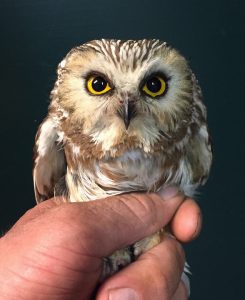
A return visitor.
Given the relatively low number of adult Saw-whets we catch in the summer, we’re always excited when we catch one that is already banded. The above Saw-whet was banded at WPBO by Nova Mackentley in March, 2012. We know from the original banding data that she hatched in 2010, making her 8 years old now.
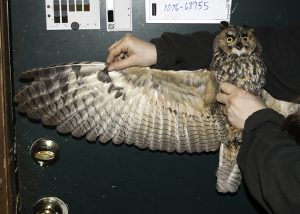
A Long-eared Owl from May, 2016 that traveled to Texas.
A few days ago the Bird Banding Lab sent us a report on the Long-eared Owl pictured above. It unfortunately was found dead, caught on a barbed wire fence. It can seem odd that a bird this size could manage to get caught that badly on one of the barbs, but it happens. I have seen several raptors that perished this horrible way. One was a Short-eared Owl and I was surprised how hard it was to remove it from the fencing. As much as we hate that aspect of the report, we were thankful that the person who found it noticed the band and reported it. It was found in Eastland, Texas which is 1,200 miles from Whitefish Point (map below).
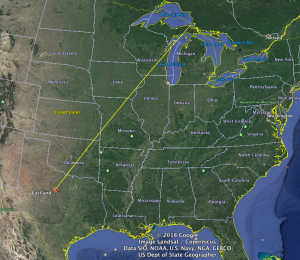
The above Long-eared was found 1,200 miles from the Point.
Here are a few random sightings from the net lanes, a Polyphemus Moth & a baby Skunk.
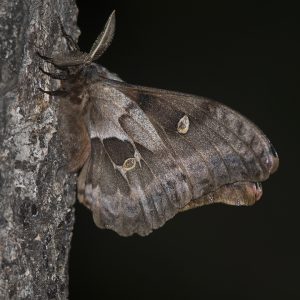
Polyphemus.
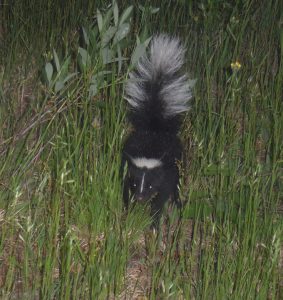
A baby Skunk.
Lastly, I’m very happy to have Ryan Steiner back this summer. We did the summer season together in 2016. He has since started Grad School at the University of Minnesota, Duluth, but managed to get away to return this season.
Chris Neri



